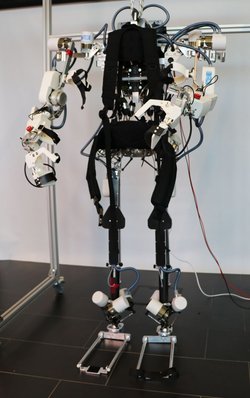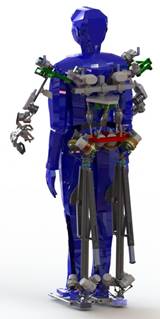Full Body Exoskeleton
Exoskeleton for upper body robotic assistance
Contact person:
Technical Details
System description
The active full body exoskeleton is a human-machine-interface developed to create synergies between man and machine in order to optimize processes and the workflow of upper body rehabilitation. The exoskeleton has seven contact points to the operator and the kinematic structure follows the human movements. In order to achieve the autonomy required for rehabilitation applications, all processing is performed by a small computing system that is embedded into the system. The kinematic structure has five active degrees of freedom at each arm, six at the back, six at the hip, two at the legs and six at the feet.
Further Details:
- 3-hierarchical-layer-based control architecture. Robust cascaded velocity-position-current control on the low-level, dynamic control, gravity compensation and biosignal integration at mid-level (for the upper body) and controllability over a Web GUI at high-level
- 3 therapy modes implemented for the upper body:
Master-Slave, Teach-In and Replay, gravity compensated free running mode.



